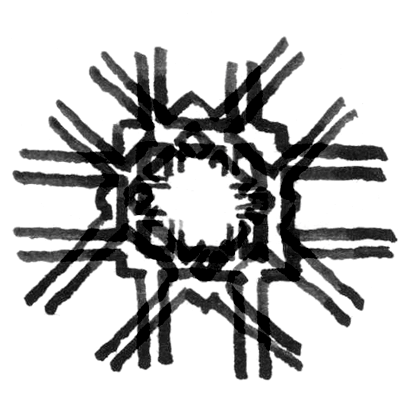Joseph Beuys, Lecture at Crawford Gallery Cork photo Caroline Tisdall
above : click for original Krauss article
below : detail from Krauss article
The expansion to which
I am referring is called a Klein group when employed mathematically and has
various other designations, among them the Piaget group, when used by structuralists involved in mapping operations within the human sciences.* By means of
this logical expansion a set of binaries is transformed into a quaternary field which
both mirrors the original opposition and at the same time opens it. It becomes a
logically expanded field which looks like this:
* The dimensions of this structure may be analyzed as follows: 1) there are two relationships of
pure contradiction which are termed axes (and further differentiated complex axis the
neuter axis) and are designated by the solid arrows (see diagram); 2) there are two relationships of
contradiction, expressed as involution, which are called schemas and are designated by the double
arrows; and 3) there are two relationships of implication which art. called deixes and are designated by
the broken arrows.
For a discussion of the Klein group, see Marc Barbut, "On the Meaning of the Word 'Structure'
in Mathematics," in Michael Lane, ed., Introduction to Structuralism, New York, Basic Books, 1970;
for an application of the Piaget group, see A.- J. Greimas and F. Rastier, "The Interaction of Semiotic
Constraints," Yale French Studies, no. 41 (1968), 86-105.
regarding Phillip O'Sullivan respond to Rosalind Krauss's diagram







